From rocket engines and hip implants to spare car parts and jewelry, metal 3D printing is used in just about every industry. Technology advancements make 3D printing with metal faster, cheaper, and more reliable than ever.
If you’re new to metal 3D printing, this guide is for you. Here at All3DP, we have dozens of articles on metal 3D printing and printers because we use it ourselves. We talk to the material manufacturers, the 3D printer makers, the on-demand service providers, and the people using it for everything from tooling to turbine engines.
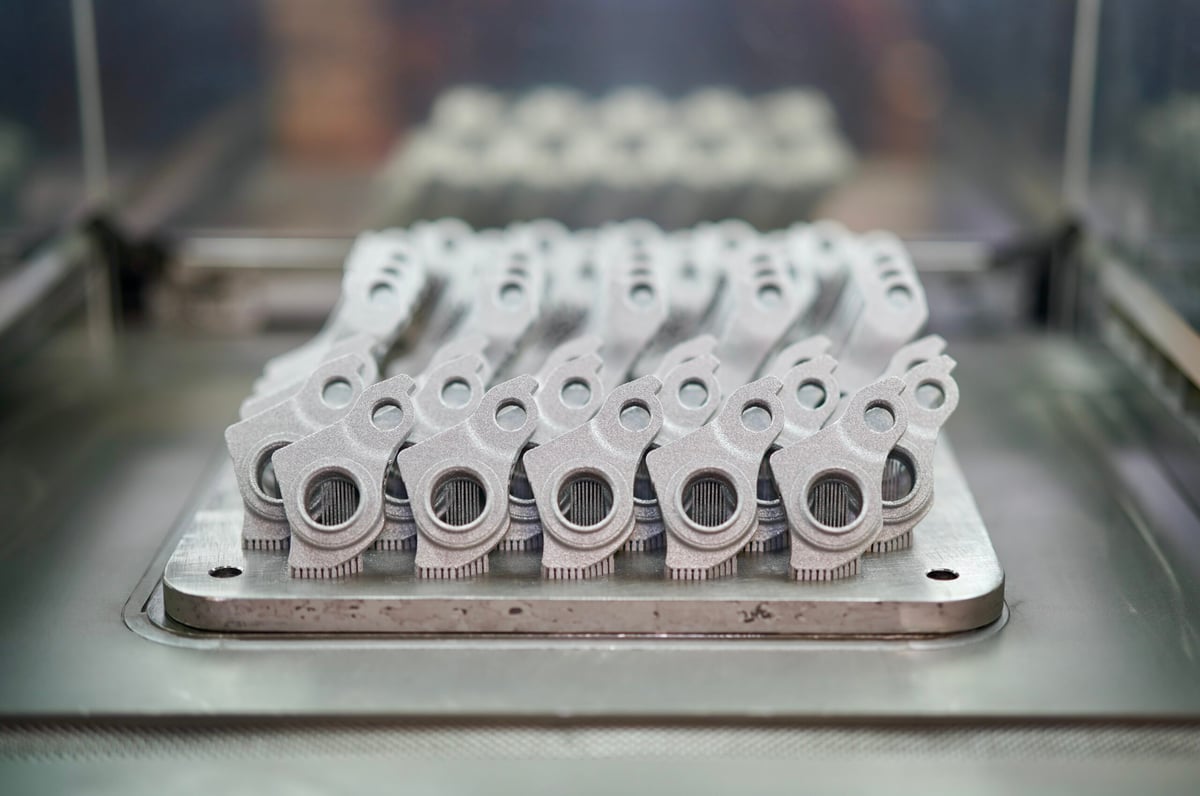
Metal 3D Printing in a Nutshell
Metal 3D printing (also called metal additive manufacturing) creates both functional prototypes and final end-use parts at a rapid speed without molds or tooling. The technology is generally less expensive and time-consuming than injection molding or CNC machining for manufacturing low volumes of specialized metal parts, particularly for high-tech areas, such as aerospace and industrial equipment. You’ll also find metal 3D printed parts as consumer products, such as golf clubs and bicycle parts, and as medical products, such as dental implants and surgical tools.
To 3D print metal, there are more than 10 types of technology used and hundreds of 3D printable metals. There are easy-to-use and affordable desktop machines and then there are large-scale industrial solutions. In short, there’s a lot to cover, so let’s dive in.
What is Metal 3D Printing For?
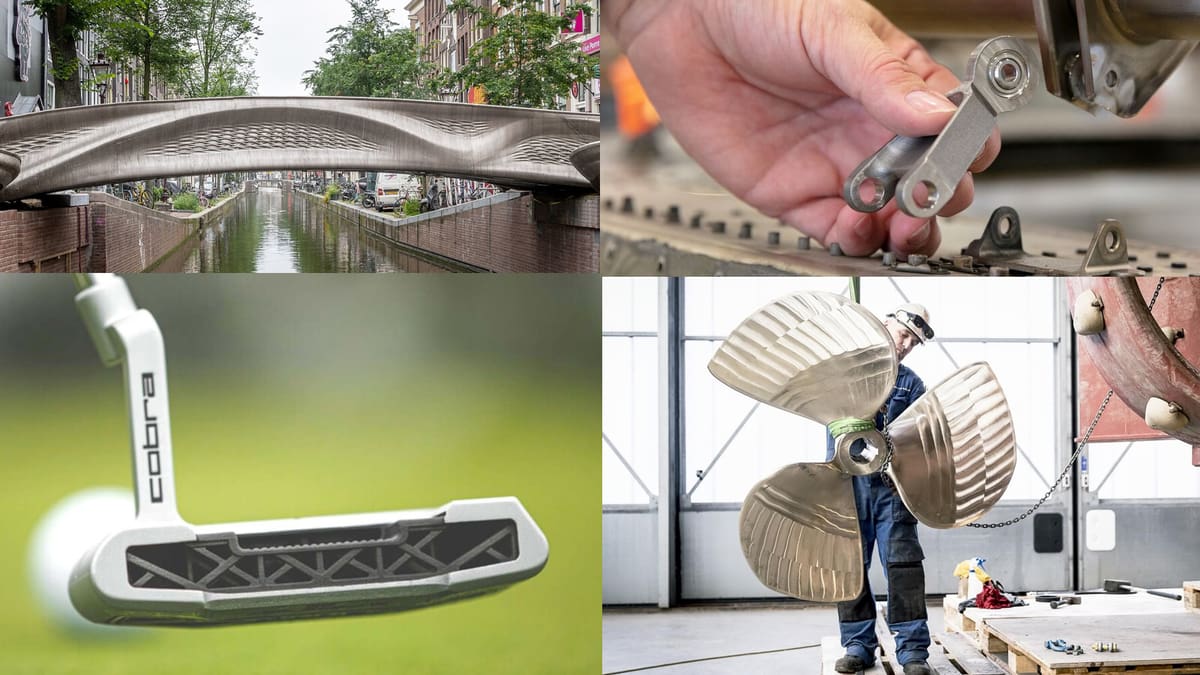
What is metal 3D printing not used for? This question would have the sorter answer. Metal additive manufacturing is a highly versatile technology. It’s accessible enough for small businesses and sophisticated enough for large manufacturers and regulated industries.
Lessons learned from the supply chain disruptions of the pandemic forced manufacturers to take a look at bringing more part manufacturing back home from overseas. From local machine shops to major automakers, there’s a shift to move more metal part production in-house, especially for prototypes, spare parts, and tools, such as metal injection molds.
Metal 3D printing can replace machining for one-off, replacement, and short-run parts because it’s faster and cheaper. There’s less waste than other methods and it enables you to fabricate one part in hours instead of days. Companies that once outsourced their metal fabrication are now able to do it themselves or turn to a metal 3D printing service.
Militaries around the world are one of the primary adaptors of metal 3D printing, which is used for spare and replacement parts in the field to keep troops rolling.
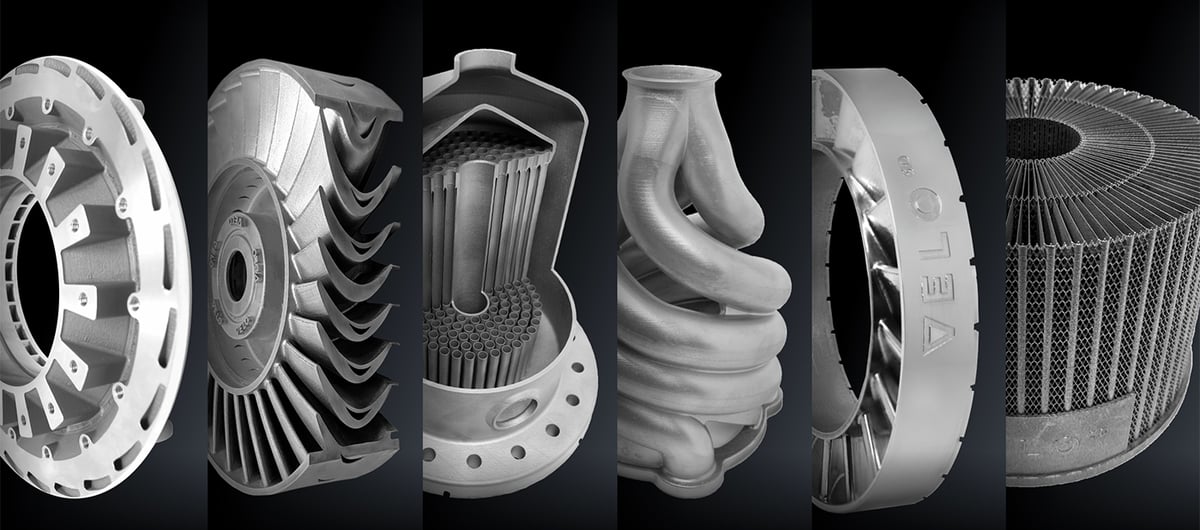
There’s a lot more to metal 3D printing than a quicker and cheaper way to fabricate the parts you already have. The main benefit, most in the industry would argue, is that you can create parts with 3D printing that are not possible (or not feasible) to mold, machine, or cast. These include parts with lattice infills and complex internal channels, parts within parts, and parts that used to be assembled from dozens of part can now be 3D printed as one.
Designing parts from the start to be 3D printed in metal is also used to create lighter-weight parts and smaller and more efficient parts.
Particularly in the aerospace and medical industries, companies are exploiting the unique features of metal 3D printing to manufacture completely new products. Innovative parts 3D printed with metal include everything from rocket engines to patient-specific spinal implants.
Top Applications of Metal 3D Printing
- Low-Volume & Specialty Parts
- Aerospace Parts
- Functional Metal Prototypes
- Spare & Obsolete Parts
- Factory Tooling
- Surgical & Dental Implants
- Jewelry & Decorative Arts
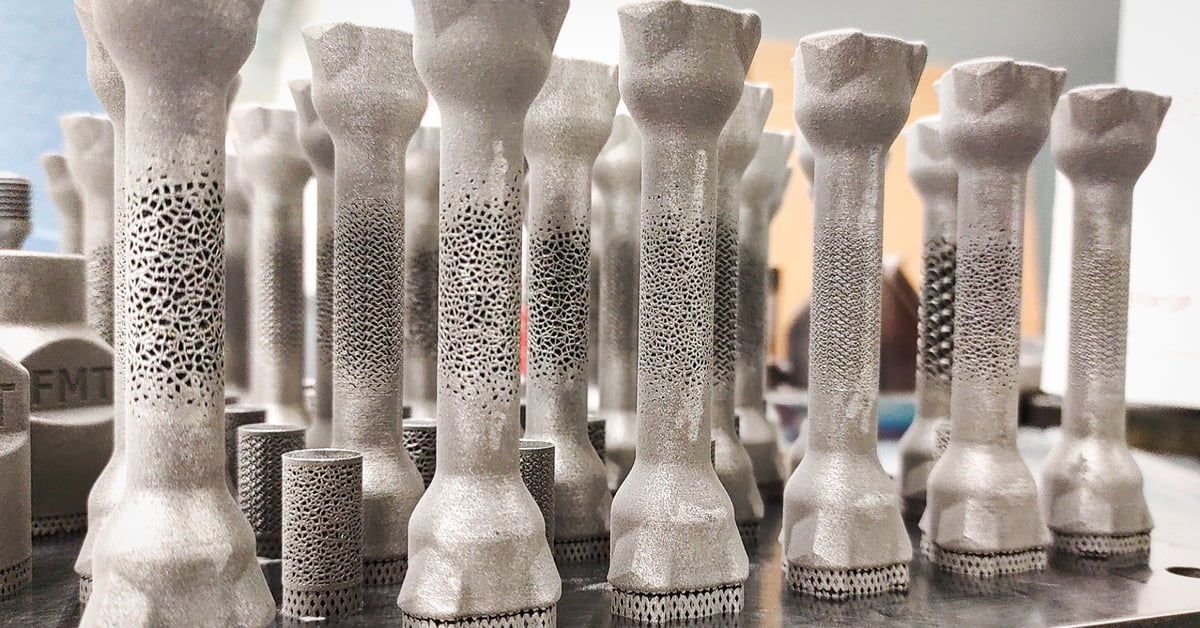
How to 3D Print With Metal
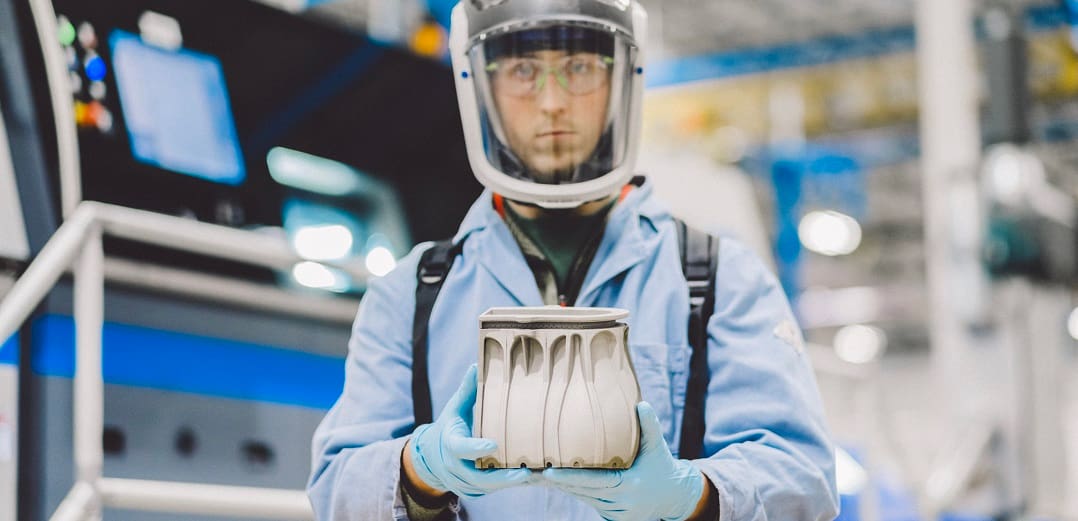
3D printing is not one technology but several. There are about 10 ways to 3D print metal parts, ranging from accessible and affordable desktop-size metal 3D printers to industrial versions the size of a shipping container. You can 3D print basic metal parts on a 3D printer that costs under $1,000 or flight-certified satellite components on a 3D printer that costs around half a million dollars.
The methods of metal 3D printing fall into technology categories loosely based on whether you’re printing with metal filament, metal powder, or metal wire. There are even metal-infused resins, metal rods, and metal pellets as material options, all producing parts with different attributes. We go into all 10 technologies, from DED to WAAM, at this guide below:
Selecting which metal technology to use is a balance of needs. Consider the importance of detail and shape, size, strength, type of metal, cost, printing speed, and volume. Some technologies produce parts ready to use after printing, while others require lengthy post-processing. All of the current technologies have pros and cons when it comes to these considerations and, unfortunately, no method 3D prints super-strong parts, quickly, cheaply, and perfectly, so pick your priorities.
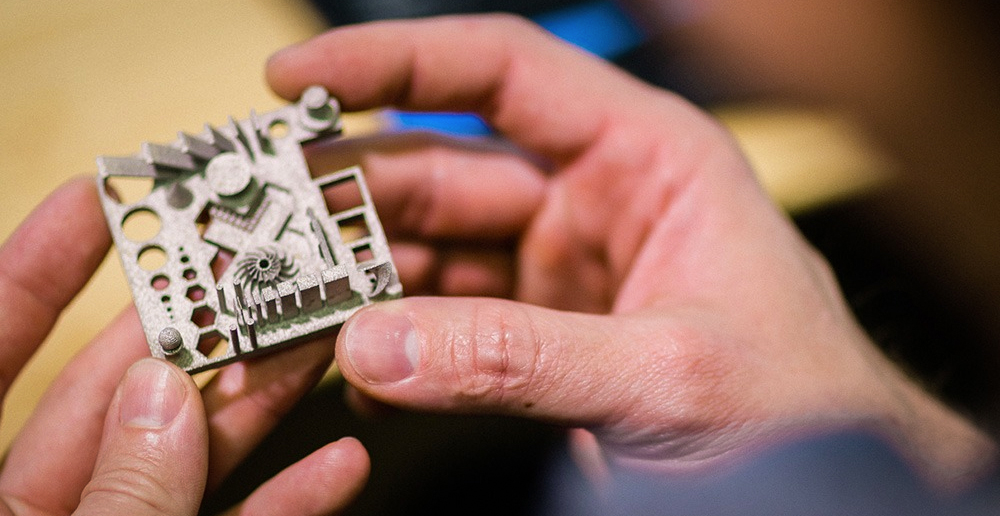
Although the International Standards Organization has categories of 3D printing technology, the names of the individual methods may vary from one 3D printer maker to the next. In the individual metal 3D printing technology guides linked below, we go in-depth into these differences and the best printers and services for each one.
Common Types of Metal 3D Printing Technology
- Fused Deposition Modeling (FDM)
- Laser Powder Bed Fusion (LPBF) / aka Selective Laser Melting (SLM)
- Electron Beam Melting (EBM) / aka Powder Bed Fusion with Electron Beam
- Metal Binder Jetting
- Wire Arc Additive Manufacturing (WAAM)
- Directed Energy Deposition
- Metal Lithography
- Cold Spray
- Micro 3D Printing
- Cold Metal Fusion
Which Metals Are Used in 3D Printing?
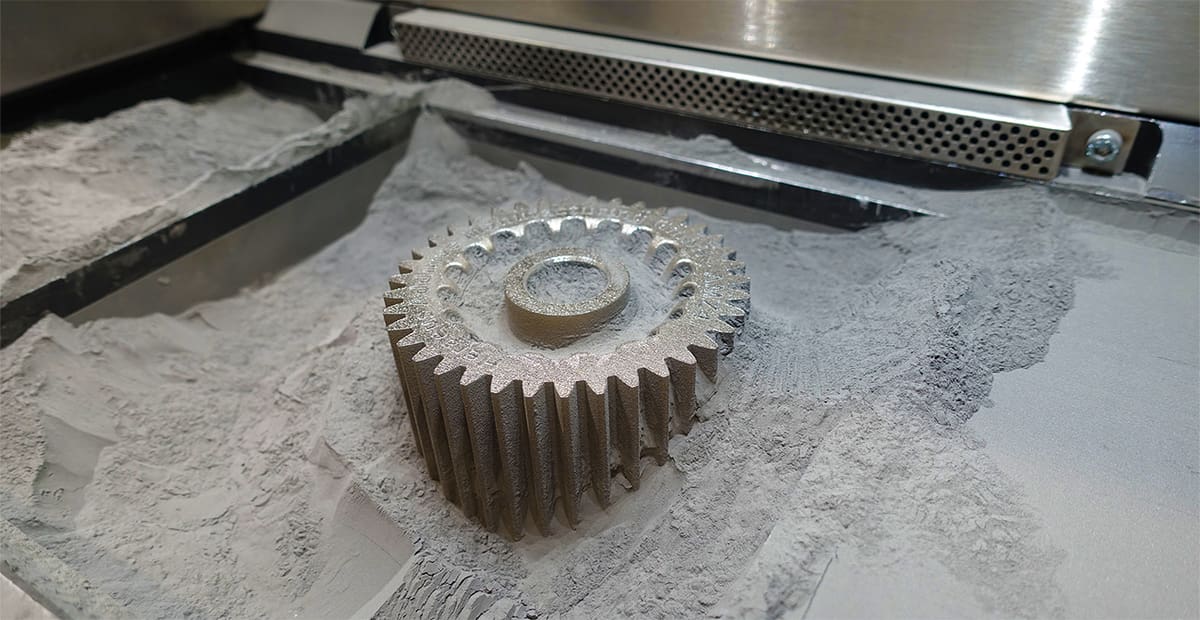
3D printing does not necessarily need special metals. Many machines and technologies can use the exact same metal material used in other manufacturing methods, such as injection molding or welding. Some 3D printing technologies, however, work best with metals, particularly powders, that are made specifically for 3D printing. Some metals, primarily reactive or reflective ones, such as copper, require specific 3D printers with specific features to handle these metals.
In the end, there are nearly no metals that can’t be 3D printed. You can 3D print everything from pure gold to cobalt chrome.
The most common metal to 3D print is stainless steel. All the 3D printing technologies can print this material to varying levels of strength and density. For example, when assessing your stainless steel 3D printing options, consider the final part density you need (90% – 99.6%), the porosity (which could be a drawback or a benefit depending on your application), and the usual set of mechanical properties required, such as tensile strength.
Most Common Metals Used in 3D Printing
- Stainless Steel
- Titanium
- Aluminum
- Copper
- Tool Steel
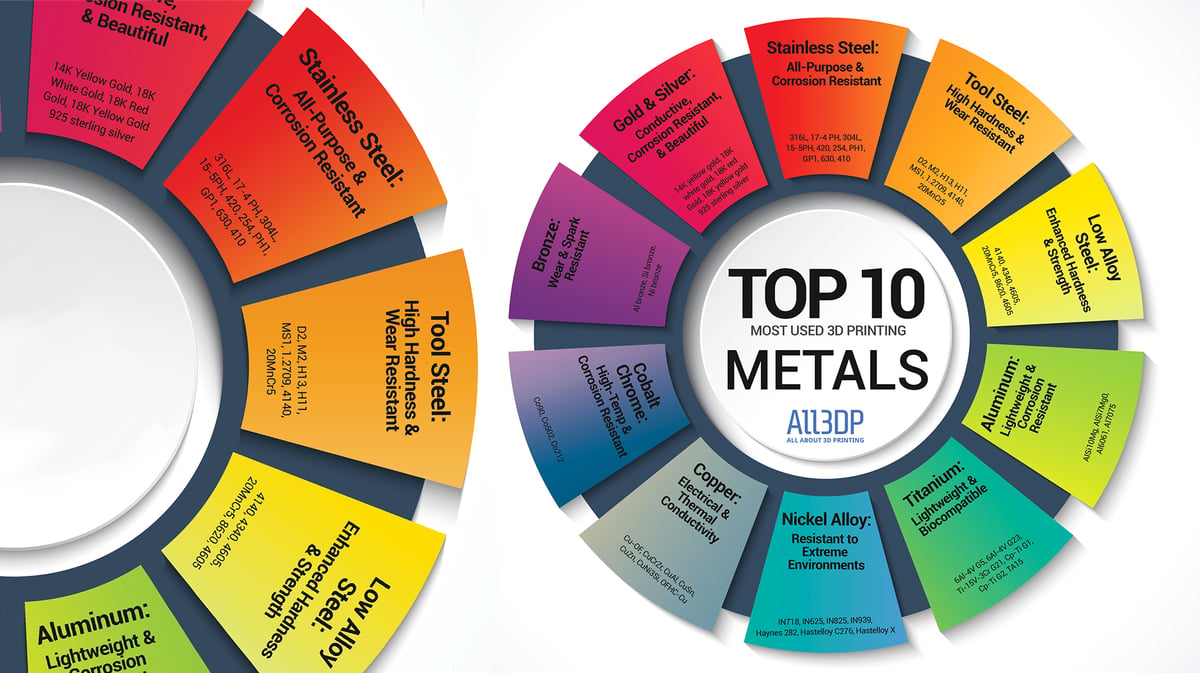
What To Look for in a Metal 3D Printer
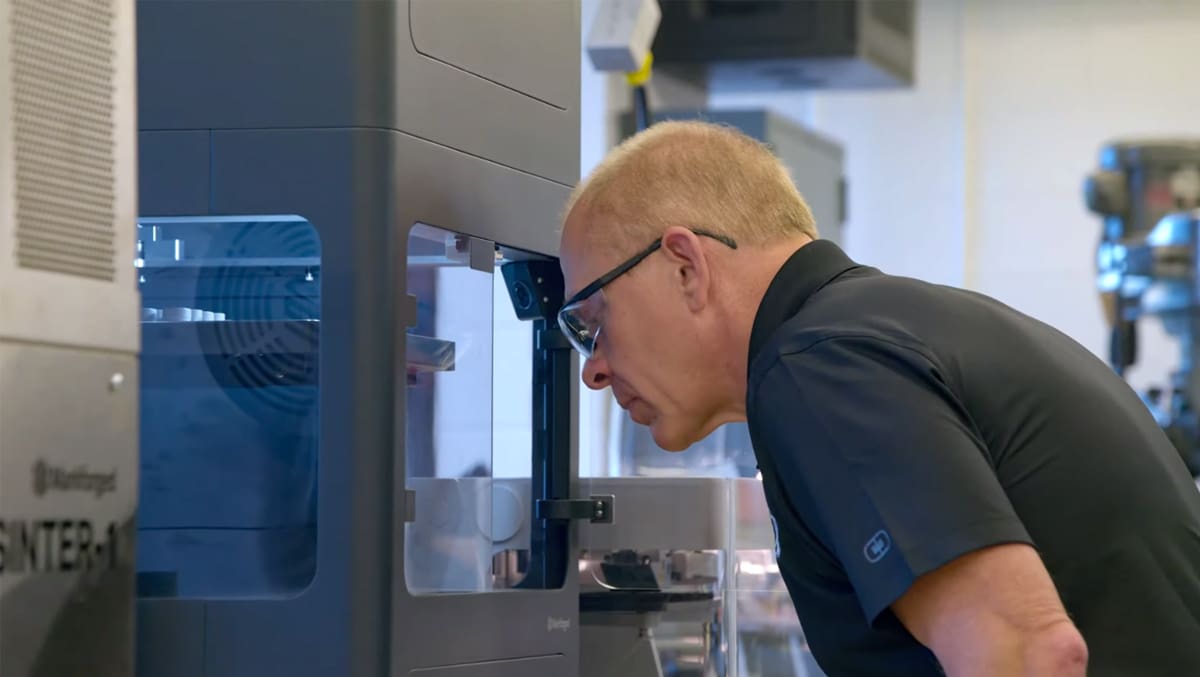
When it comes time to purchase your first metal printer or your tenth, there are key factors to consider. Fortunately, there are many 3D printer makers to choose from, but the market isn’t so huge that you can’t narrow it down to a few candidates yourself.
As we pointed out above, you need to know your needs first: what will you print, how will it be used, how many will you print, what materials are ideal, and your budget.
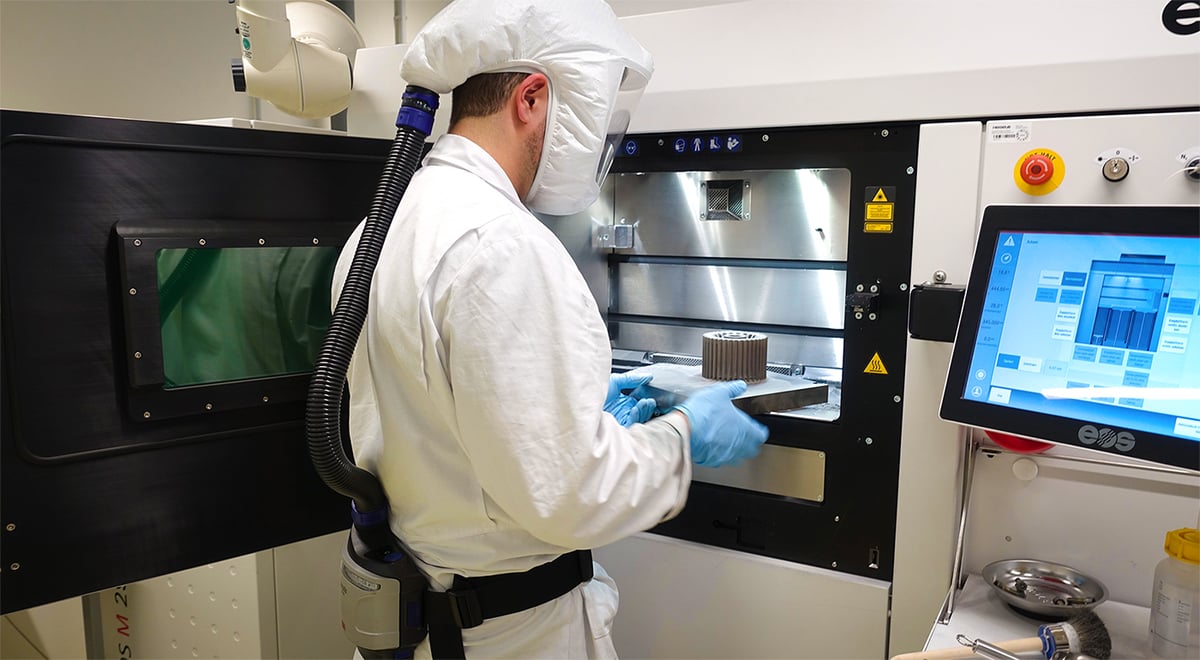
6 Steps Buying a Metal 3D Printer
- Establish the Business Case for Your 3D Printer Purchase
- Understand the Technology
- Test Drive & Request Sample Prints (from the manufacturer or a service provider)
- Get Upper Management Buy-In to Your Choice
- Understand Consumable and Hidden Costs
- Buy From a Reputable Distributor
A great way to evaluate if 3D printing with metal is right for you is to order metal 3D printed parts from an on-demand service company. We’ve done the hard part for you by evaluating and listing the top ones for metal in the guide linked below:
Our guide lists the top providers for metal 3D printing in terms of expertise, volume, and metal technologies offered. These companies will have machines from industrial metal 3D printer makers, such as SLM, EOS, and 3D Systems. If you want to evaluate some of the smaller machines, such as from Markforged or Desktop Metal, they are also used by service providers but likely, the smaller ones. By contacting the equipment maker directly, you can locate a 3D printing company to work with, or they may send you sample parts to evaluate.
How Much Do Metal 3D Printers Cost?
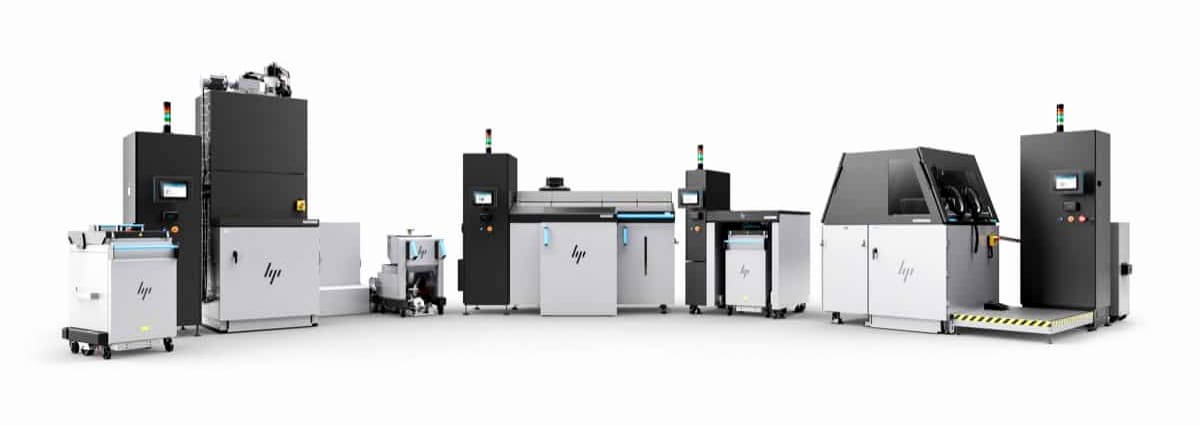
Not long ago metal 3D printing was the stuff of aerospace manufacturers and medical equipment makers, but today, it’s everywhere.
Machinists 3D print metal spare parts to keep factories moving, bicycle makers 3D print aluminum and titanium frames, militaries worldwide are 3D printing essential components on the front lines, dentists 3D print bridges, and jewelers now 3D print in precious metals.
That said, the price range for metal 3D printers is roughly $1,500 to $1 million plus.
The cheapest way to 3D print metal is to use metal filament on a desktop FDM 3D printer. Metal filament for printing metal parts consists of a plastic base with metal particles evenly infused within it. Metal-infused filament for metal parts is a unique type of composite filament that can yield strong, chemically resistant, and nearly solid metal parts (98%+) when used properly.
Unlike all other types of filament, metal filament for metal parts requires a 2- or often 3-step process after printing, which includes removing the polymer from the print in a chemical solvent and then putting the print in a sintering oven that condenses it into a metal part.
Don’t confuse these metal filaments with those for decorative purposes. Metallic filaments that are simply named “aluminum” or “copper” to refer to their color, and some that are sold as PLA+metal include only 5% to 40% metal powder.
Of course, keep in mind that no metal 3D printer spits out ready-to-use metal parts. At the very least, there’s some cleaning required.
Almost all metal 3D printing platforms require that you purchase extra equipment. Depending on your technology of choice, acetone debinding equipment is needed to remove polymer binders from your metal parts, depowdering stations are needed to remove leftover or loose powder, furnaces are required to sinter your 3D printed metal part to its full density, and powder mixing stations enable you to blend used metal powder with fresh metal powder.
Many metal 3D printer manufacturers also make these accessory pieces of equipment, and some are even integrated. Be sure to consider the full package of hardware and software that will add to the bottom line of your purchase.
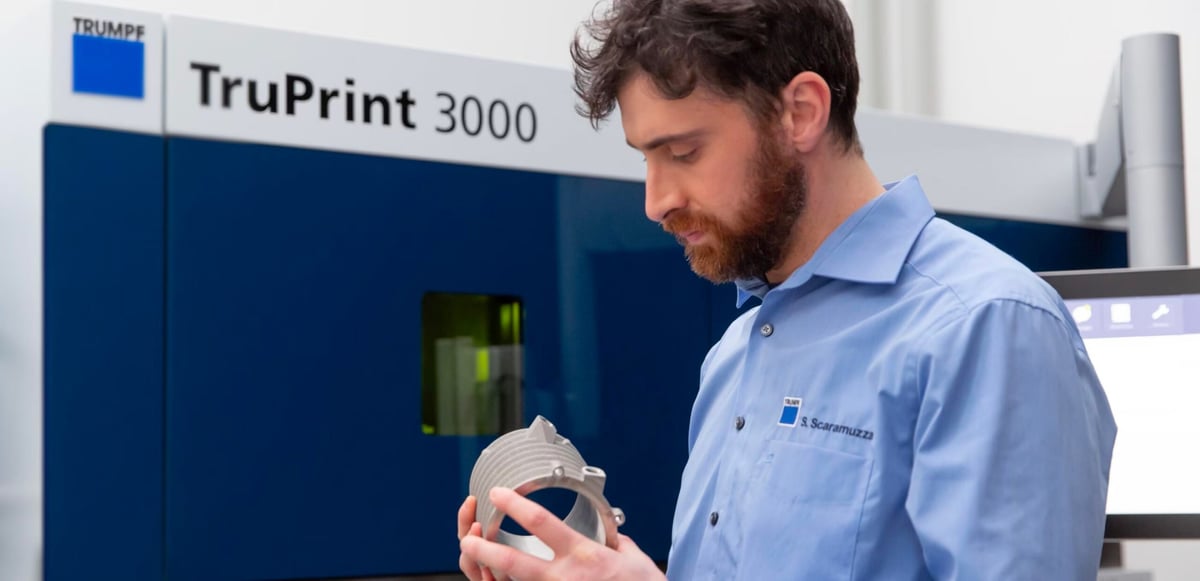
Metal 3D Printer Discounts, Deals & Packages
When you’re buying an “off the shelf” 3D printer anywhere between $1K and $50K, you’ll usually find a consistent and public sticker price. However, when you get above $50K, and especially when you approach $150K, there can be many factors that affect the final price you’ll actually pay, such as customizations, options, your location vs. where the machine is manufactured (import duties, taxes), how many you’re buying, discounting for education, research, or case study partnerships, long-term agreements, marketing agreements, installation and training, optional warranties, and more.
The price of one machine with every possible add-on and customization shipping to a high-cost location can be three times the price per unit of a 10-machine order to a major city.
That said, manufacturers should provide you with a ballpark figure for your capital expenditure request upon first contact. OEMs don’t want to spend time and resources serving a potential customer when their machine is clearly out of reach, so early transparency on prices is a win-win.
How Much Do Metal 3D Printing Services Cost?
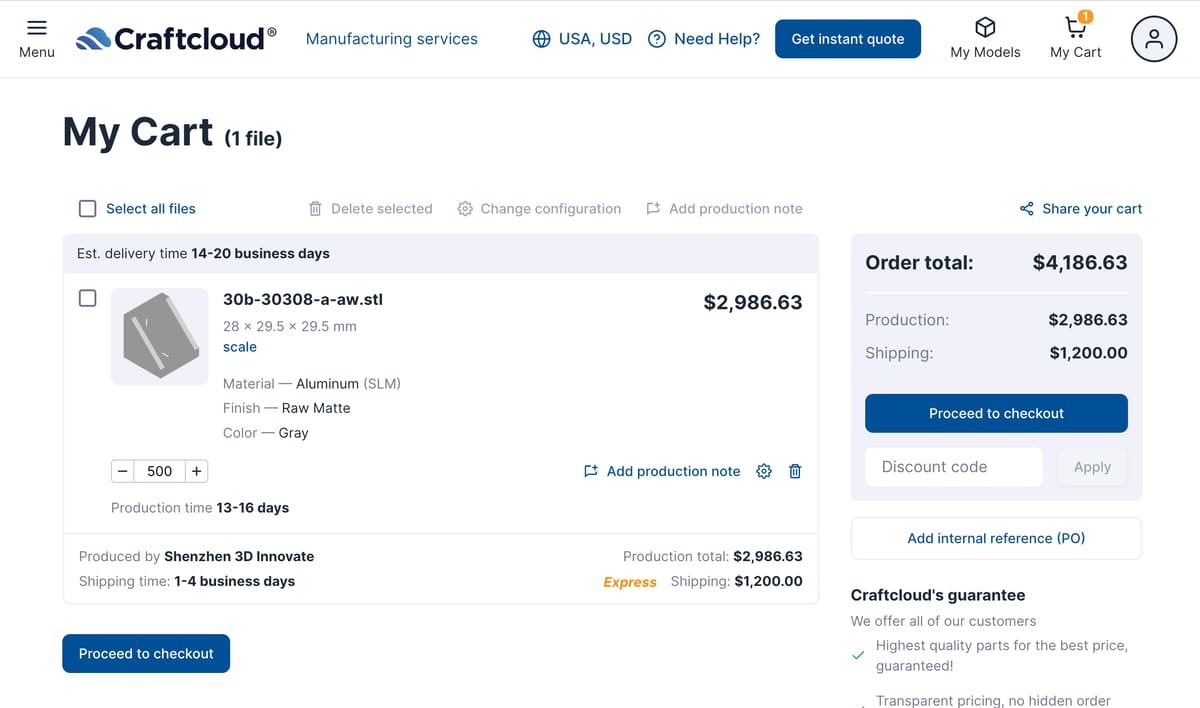
To give you a sense of how much it would cost to order your parts 3D printed at the growing number of services available, All3DP ordered four metal 3D printed parts in various sizes and quantities at some of the top metal 3D printing services.
One order was for 500 aluminum brackets that were representative of a scenario any manufacturing company could find itself in when the normal part supply chain is disrupted. 3D printing is used to bridge the gap until you expect your full order of injection molded or cast parts. The prices varies from about $11,000 to $18,000 with delivery ranging from a few days to three weeks.
The next project was for 50 stainless steel hand levers. This project represented the situation when a company needs a small volume of specific parts unique to their product, but machining or injection molding just 50 is cost prohibitive. The mold itself to injection mold these handles would likely be thousands of dollars and the cost of the steel to machine them would, likewise, be very high. These prices ranged more widely from $1,400 to $14,000.
The third project was for 5 positioning blocks in maraging steel. Here, we imagined an aerospace company that needs to replace an essential component on an ageing aircraft and there are no spares. Maraging steel is often required for its combination of high strength, toughness, dimensional stability, and resistance to cracking, extreme forces, and high heat, but only a small handful of services offered it. Prices ranged from $54 to $19,000.
For our last project, we wanted to test the availability and price of titanium. Titanium drill bits are extremely hard and maintain their cutting edge for a long time, making them more durable than standard steel bits. This metal also has excellent resistance to corrosion and is often used in marine or chemical processing applications, where exposure to corrosive substances could degrade other materials. Prices here ranged from $52 to $156 for one part in titanium with delivery from four days to three weeks.
Overall, what we found is that there is no standard way to order metal 3D printed parts, no uniform description of materials or technologies, and a wide range of prices. So take a look at our full article, which should take some of the confusion out of the process and enable you to order metal 3D printed parts with confidence.
Top Metal 3D Printers
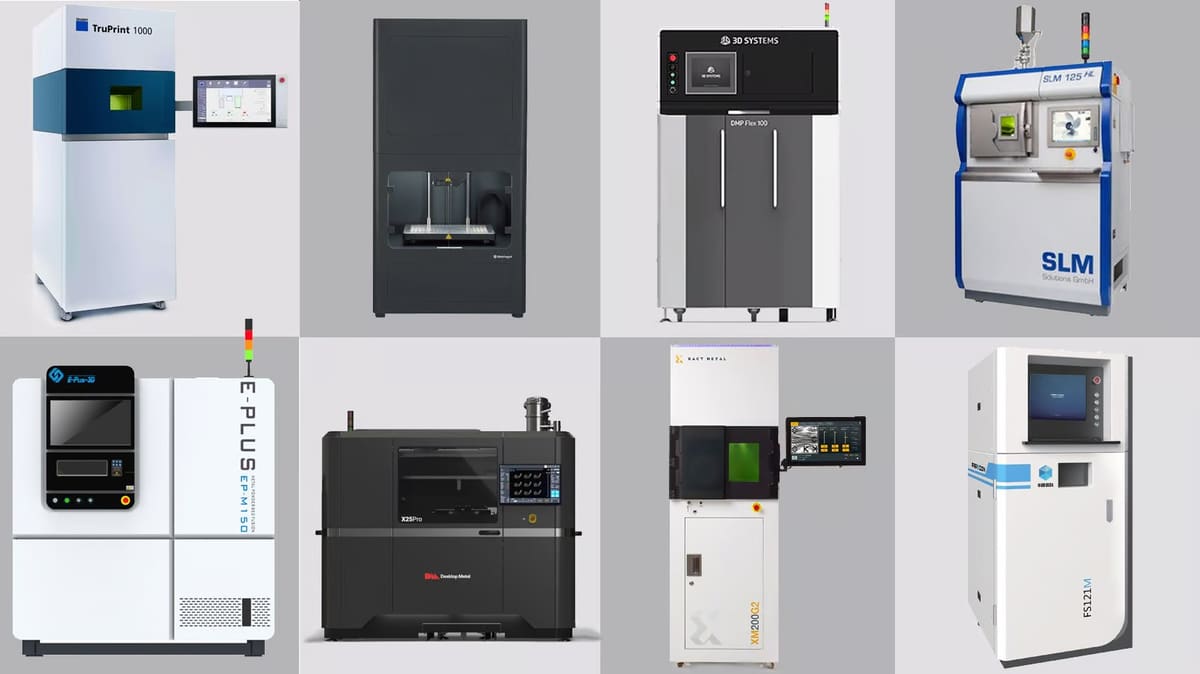
Although All3DP’s labs do not have all of the metal 3D printers we list in our guides, we speak to companies that use them and stay on top of all the latest developments. Our guide to the top metal 3D printer is updated twice a year. Throughout the year, we report on all the new machines and upgrades launched.
We have about 20 metal 3D printers in our guide to the Best Metal 3D Printers spanning nearly all technologies. Separately, we have a guide to the top laser powder bed fusion 3D printers since this is the most popular technology for 3D printing metal. There are also guides to the top 3D printers for metal binder jetting, wire arc additive manufacturing, cold spray, and electron beam melting.
When it comes to FDM 3D printing using metal filament, we don’t list the top machines because there are so many that can accommodate this material. Essentially, any desktop 3D printer with a hardened steel nozzle and a heated bet to about 180ºC – 220ºC can 3D print metal filament, which is metal powder embedded in a polymer filament.
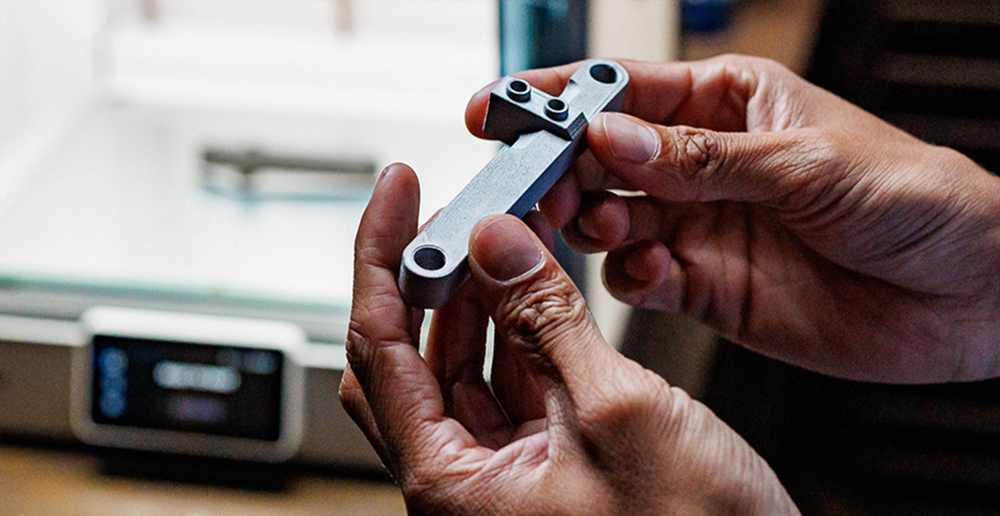
Recently, several 3D printer makers, including UltiMaker, BCN3D, Zortrax, and Anycubic have launched printer profiles that enable you to print with metal filament on their machines, while other manufacturers, such as Raise3D, have launched new 3D printers just for metal filament. Even major 3D printing services, including Craftcloud, have also added metal filament to their list of available materials.
The last category of metal 3D printers to highlight here is the ones that combine metal 3D printing and CNC machining in one unit. These so-called hybrid 3D printers can quickly build a near-net shape of, for example, an injection mold with 3D printing then the CNC tool head refines it to tighter tolerances all in one step. For a lower-cost investment in metal 3D printing, you can buy a metal extruder to fit onto your existing CNC machine or robotic arm for this type of application.
Latest Advancements in Metal 3D Printing
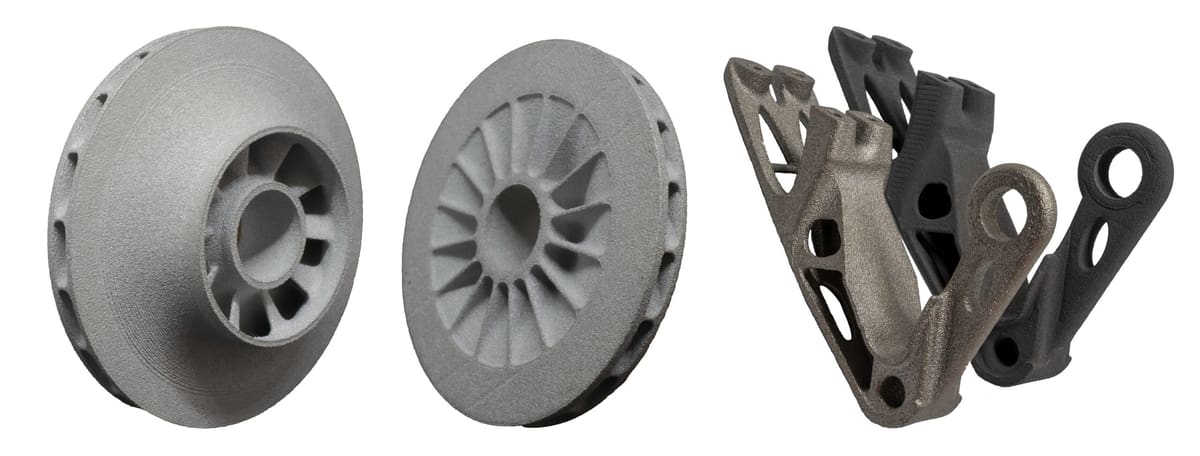
Advancements are constant among metal 3D printer makers for faster, cheaper, and more reliable technology.
So far in 2024, new metal 3D printers debuted from:
- Farsoon’s 12-Laser (Metal LPBF)
- Nikon’s Lasermeister LM300A (DED)
- EasyMfg M550Max and M150Inno (Metal LPBF)
- EOS’ New M 290 1kW (Metal LPBF)
- Meltio’s New M600 Laser Wire (DED)
- Farsoon’s new FS721M-8-CAMS (Metal LPBF)
- Eplus3D’s New EP-M400S (Metal LPBF)
- Colibrium Additive’s Spectra M (EBM)
- Additive Industries’ MetalFab 300 Flex (LPBF)
- Spee3D Titian (Cold Spray)
The latest breakthroughs have come in software to monitor and analyze metal 3D parts as they’re being built and document the process. There are advancements in specialty metal powder materials created specifically for additive manufacturing that produce parts as strong as casting but lighter weight. And we’re seeing metal become more accessible to smaller businesses as desktop 3D printer makers certify processes and materials for their machines.
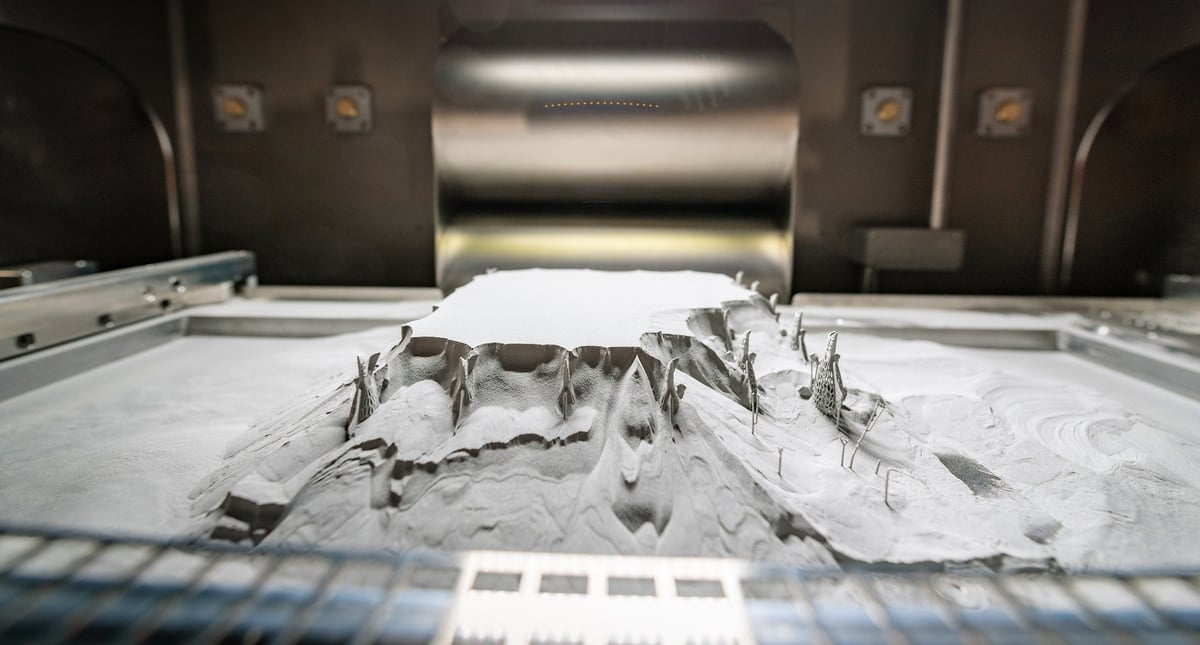
Massive Metal Market Growth
The market for metal 3D printers and 3D printing services got a boost from the effects of the global pandemic on traditional manufacturing supply chains, but has since softened a bit due to global economic uncertainty.
The latest report from Additive Manufacturing Research, “Additive Manufacturing with Metal Powders 2023”, shows that while there is a contraction in hardware investments, it may be at least partially offset by slight single-digit growth in opportunities for materials and production services fueled by newfound interest in the technologies. The latest forecasts in the report expect the metal AM market to to achieve significantly more growth compared to the total additive market.
The global metal 3D printing market was valued at around $6.36 billion and is expected to expand at a compound annual growth rate of 24.2% to reach $35 billion by 2030.
More than 1,500 metal laser powder bed fusion machines are sold every year compared to about 100 – 200 metal binder jetting units. Yet, consumers agree that metal binder jetting printer sales should triple or even grow to six times today’s level in the next five years, according to the Ampower Report. This is in part due to the new HP MetalJet solution and the new GE metal binder jet solution, among others, hitting the market in the past year.
Metal 3D printer sales are approaching 2,250 units per year, spanning all technologies.
Lead image source: UltiMaker Metal Expansion Kit
License: The text of "Quick Start Guide to Metal 3D Printing" by All3DP Pro is licensed under a Creative Commons Attribution 4.0 International License.





